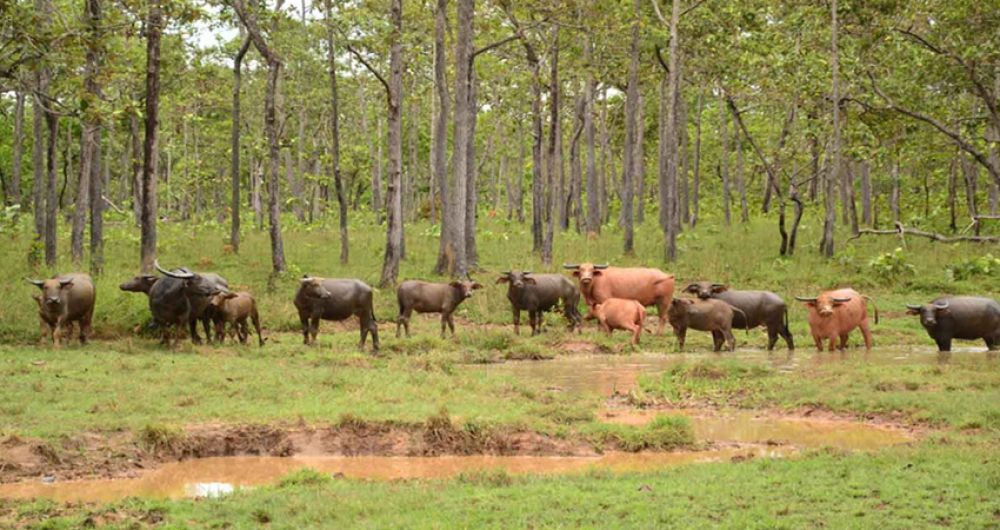

The Lumphat Wildlife Sanctuary, located in the northeastern province of Ratanakiri, Cambodia, has a rich but relatively recent history as a destination for eco-tourism. The sanctuary is part of Cambodia's Eastern Plains Landscape and is known for its biodiversity and efforts in wildlife conservation. It covers around 2,225 square kilometers and is home to a range of ecosystems, including evergreen forests, grasslands, and wetlands, which play host to an array of wildlife.
In the past, during the era of the Khmer Rouge and the subsequent Vietnamese occupation of Cambodia, Ratanakiri was a remote and largely inaccessible area. It was not until the 1990s that Ratanakiri, and with it Lumphat Wildlife Sanctuary, started to attract the attention of visitors. Initially, the influx of tourists was mainly comprised of backpackers and adventurous travelers, drawn to the region's natural beauty and the allure of its off-the-beaten-path reputation.
As awareness of environmental conservation grew globally, tourism in Lumphat Wildlife Sanctuary began to evolve. By the early 2000s, a conscious effort was made to develop the sanctuary as an eco-tourism destination. This was both to promote sustainable development in Ratanakiri and to help protect the rich biodiversity of the region. Efforts were put into place to set up guidelines that would ensure tour operators and guests had a low impact on the natural environment.
Community-based tourism became an important aspect of the experience at Lumphat Wildlife Sanctuary. Local indigenous communities, many of which had lived in the region for generations, were engaged as stakeholders in tourism. They offered homestays, guided tours, and shared their knowledge of the land and its heritage with visitors, creating an authentic and responsible travel experience.
In the past decade, visitor numbers have seen a steady increase, though Lumphat Wildlife Sanctuary remains a niche destination for those interested in wildlife and culture. Tourism statistics are not as robust as in other parts of Cambodia, but the trend towards sustainable and responsible travel continues to grow, with Lumphat benefitting from this broader movement.
The government of Cambodia, along with various NGOs, has recognized the potential for sustainable tourism to contribute to conservation efforts. They are actively working to promote the sanctuary and improve infrastructure while ensuring that development is sustainable. Current trends show a rise in eco-conscious travelers seeking experiences that offer wildlife encounters (such as sightings of the endangered Asian elephant, banteng, and various bird species) with minimal human impact.
As the global travel industry starts to rebound from the effects of the COVID-19 pandemic, destinations like Lumphat Wildlife Sanctuary are well-positioned to attract tourists who prioritize health, safety, and sustainability.
In conclusion, Lumphat Wildlife Sanctuary's tourism history reflects a broader shift towards eco-tourism and an increased appreciation for natural and cultural preservation. With its stunning landscapes and rich biodiversity, Lumphat continues to attract visitors who are drawn to the tranquil beauty and the chance to explore one of Cambodia's less-trodden paths.